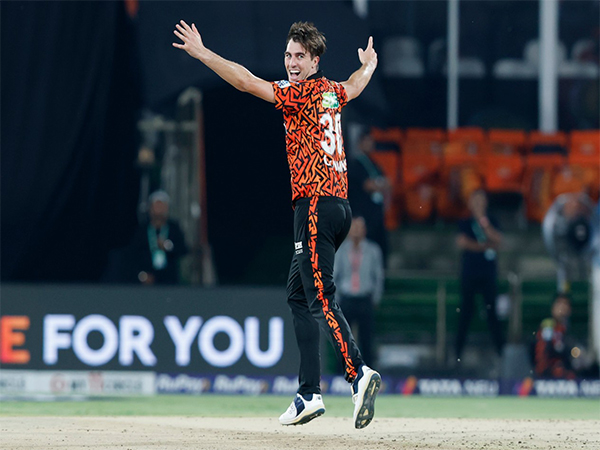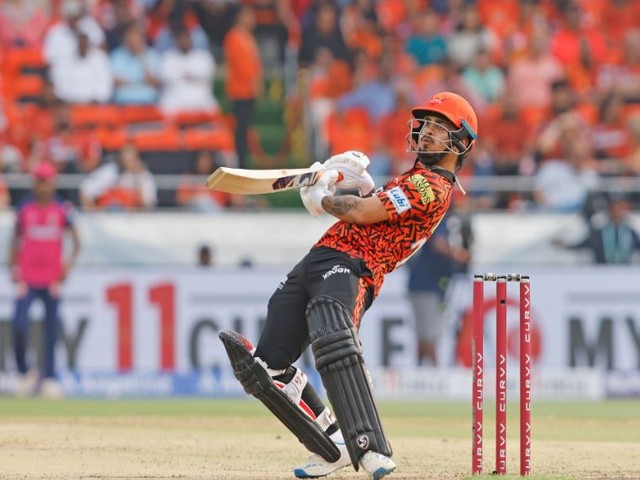
Gujarat leads in urban development: Nearly 225 town planning schemes approved in just three years
May 23, 2025
Gandhinagar (Gujarat) [India], May 23 : Under the leadership of Gujarat Chief Minister Bhupendra Patel, Gujarat is making significant strides in the direction of urbanisation.
Approximately 225 town planning schemes have been approved in the last three years, significantly advancing urbanisation across Gujarat. Alongside, essential urban infrastructure, including roads, street lighting, and drinking water pipelines, has been developed in all cities. Special focus has been given to providing housing for economically and socially disadvantaged groups in urban areas. This systematic and strategic urban planning has greatly enhanced the 'Ease of Living' for residents in Gujarat's cities.
In 2005, the then-Chief Minister Narendra Modi declared 2005 the "Year of Urban Development," focusing on enhancing urban infrastructure across the state. Gujarat's journey of urban development has now completed 20 years, during which the state has witnessed remarkable urbanisation. To ensure that the development of Gujarat's cities aligns with the needs of modern times, the state government has implemented several policies and initiatives.
To accelerate the development of world-class cities, the state government has announced in the Gujarat Budget 2025-26 that the year 2025 will be celebrated as the "Year of Urban Development."
Under the Smart City Mission launched by the Government of India, six cities from Gujarat--Ahmedabad, Surat, Vadodara, Rajkot, Gandhinagar, and Dahod--were selected to undergo transformative urban development. A total of 354 projects worth Rs 11,451 crore were initiated in these cities. Out of these, 348 projects worth Rs 11,056 crore have been completed, while 6 projects worth Rs 395 crore are in the final stages of completion.
Gujarat boasts a robust transportation network with extensive road and railway systems, modern international airports, and strategic ports. The state government has built overbridges and underpasses to manage rising vehicular traffic, particularly in Ahmedabad, Rajkot, Vadodara, and Surat, ensuring smoother and faster travel. Urban Local Bodies maintain over 28,618 km of roads, guaranteeing reliable connectivity and infrastructure upkeep.
In February 2024, the state-of-the-art Sudarshan Setu, a signature bridge connecting Dwarka and Bet Dwarka, was inaugurated at a cost of Rs 979 crore. Additionally, Gujarat is witnessing the construction of major road projects like the Jamnagar-Bhatinda Highway, Vadodara-Mumbai Expressway, and Porbandar-Dwarka National Highway, further strengthening the state's road infrastructure. Moreover, this year's budget announced the development of two greenfield expressways: Namoshakti and Somnath-Dwarka. The Namoshakti Expressway, spanning 430 km from Deesa to Pipavav, will be built at an estimated cost of Rs 36,120 crore. The Somnath-Dwarka Expressway, covering 680 km, will be constructed at an estimated Rs 57,120 crore, enhancing connectivity for areas around Ahmedabad, Rajkot, and Dwarka.
Due to Prime Minister Narendra Modi's forward-thinking leadership, Gujarat now benefits from operational metro rail systems. He launched the Ahmedabad and Surat Metro Rail projects. In September 2022, PM Modi inaugurated the first phase of the Ahmedabad Metro, connecting Thaltej to Vastral. In September 2024, he launched the second phase, linking key areas in Ahmedabad and Gandhinagar. Meanwhile, the Surat Metro project is advancing swiftly.
Gujarat is making significant progress in strengthening its railway infrastructure, positioning itself as a future-ready hub for high-speed and modern rail connectivity. The country's first Bullet Train project, connecting Ahmedabad in Gujarat to Mumbai in Maharashtra, is rapidly advancing. These two cities are set to become the first in India to witness the high-speed transformation brought about by the Bullet Train.
In September 2022, PM Narendra Modi flagged off the first Vande Bharat Express from Gandhinagar to Mumbai, marking a new chapter in semi-high-speed travel from Gujarat. Since then, three more Vande Bharat trains have been launched in the state- Jodhpur-Sabarmati (Ahmedabad), Ahmedabad-Okha, and Ahmedabad-Mumbai Central. Under the Amrit Bharat Station Scheme, 89 Railway Stations in Gujarat will be redeveloped; 18 will be inaugurated by PM Modi on May 22, 2025.
Under the leadership of PM Modi and the guidance of CM Patel, Gujarat has also made significant strides in modernising airport infrastructure. A new Greenfield Airport at Hirasar, Rajkot, has been constructed at a cost of Rs 1,405 crore, providing a major boost to the region's business and economic development.
Additionally, the Surat International Airport has been operationalised with a massive investment of Rs 3,400 crore, enhancing the city's global connectivity. Under PM Modi's ambitious initiative 'Ude Desh ka Aam Nagrik' (UDAN), connectivity has been enhanced at the airports of Bhavnagar, Jamnagar, Kandla, Keshod, Mundra, and Porbandar in Gujarat.
Under the visionary leadership of PM Modi, Gujarat continues to witness transformative growth in its urban landscape. One of the most significant milestones in this journey is the inauguration of the Surat Diamond Bourse in December 2023, developed at a cost of Rs 3,400 crore. This world-class facility not only strengthens Surat's standing as a Smart City but also cements its place as a global trading hub for diamonds and precious stones.
The Surat Diamond Bourse hosts India's largest Customs Clearance House, a jewellery mall, and facilities for international banking and secure vaults. It acts as a comprehensive hub for artisans, traders, businesses, and buyers in the diamond, platinum, gold, silver, and jewellery trade. Built under the Dream City (Diamond Research and Mercantile City) project, the Bourse is set to become a global hub for gem and jewellery commerce.
Gujarat has taken a leading role in implementing the Pradhan Mantri Awas Yojana (Urban), making homeownership a reality for economically weaker sections and lower-middle-class families in urban areas. To date, 8.96 lakh houses have been built across the state's urban regions under this scheme.
As part of innovation-driven urban housing, the Lighthouse Project in Rajkot is leveraging monolithic concrete construction technology to deliver fast and sturdy housing units. A total of 1,144 houses have been built under this project, setting an example for modern affordable housing solutions.
In a move to enhance urban planning and governance, the Government of Gujarat has upgraded 9 municipalities to the status of municipal corporations. These include Nadiad, Surendranagar, Gandhidham, Morbi, Navsari, Mehsana, Vapi, and Porbandar.
With this, the total number of municipal corporations in the state has risen to 17. These newly formed corporations will benefit from systematic and organised urban planning, enabling better infrastructure, civic amenities, and administrative efficiency. Additionally, adjoining rural areas have been integrated into the jurisdiction of these corporations to ensure uniform access to urban facilities for all citizens.
Gujarat's major cities--Ahmedabad, Surat, Vadodara, and Rajkot--have witnessed significant urbanisation. Notably, Ahmedabad holds the distinction of being India's first Heritage City. Alongside successful urban projects like the Sabarmati Riverfront, BRTS-Janmarg Project, Metro Train, and Atal Footover Bridge, Ahmedabad proudly preserves its historic pol culture and heritage-rich old buildings. The BRTS bus project, initiated by then-CM Modi, stands out as a highly successful initiative, with 350 electric buses operating on 16 routes, serving approximately 1.5 lakh passengers daily. Beyond Ahmedabad, the BRTS project is also operational in Surat, where 870 buses run on 67 routes, benefiting around 1.80 lakh passengers daily.
Recognising Gujarat's strides in urban development, Ahmedabad was chosen to host the Urban-20 meetings under India's G20 Presidency. Urban development delegates from G20 nations gathered in Ahmedabad to deliberate on sustainable city planning, smart mobility solutions, and urban resilience. Gujarat's successful urban models like the BRTS, metro, and heritage conservation were prominently showcased.
Gujarat's urbanisation is a result of its economic growth, industrial development, infrastructure connectivity, and state government initiatives. This process has transformed rural areas into vibrant urban centres, attracting investments, businesses, and migrants. Urban development draws diverse opportunities to the state, making it essential to manage urban growth and ensure sustainable development for citizens' well-being and the state's holistic progress.



























